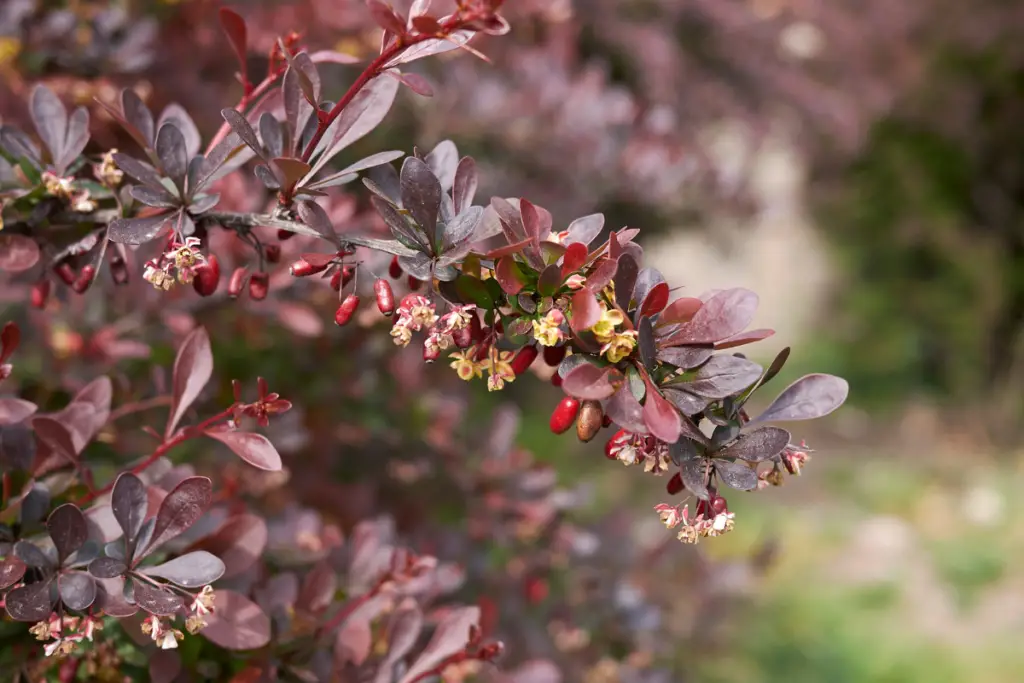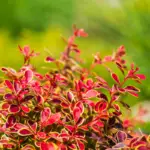Berberis thunbergii is a popular shrub that is known for its striking foliage and vibrant fall colors. However, to keep the plant healthy and looking its best, it is important to prune it regularly.
Pruning not only helps to maintain the shape and size of the shrub, but it can also promote new growth and improve its overall health.
Pruning Berberis thunbergii may seem daunting at first, but with the right tools and techniques, it can be a relatively easy task. The key is to prune at the right time and to use proper pruning techniques to avoid damaging the plant.
In this article, we will provide a step-by-step guide on how to prune Berberis thunbergii, including when and how to prune, what tools to use, and how to care for the plant after pruning.

Table of Contents
Why Prune Berberis Thunbergii?
Berberis Thunbergii, also known as Japanese Barberry, is a popular shrub among gardeners because of its vibrant foliage and low maintenance requirements.
However, like any other plant, it requires pruning to maintain its shape, improve its health, and encourage new growth.
In this section, we will discuss the benefits of pruning Berberis Thunbergii and when is the best time to do it.
Benefits of Pruning Berberis Thunbergii
Pruning Berberis Thunbergii has several benefits, including:
- Controlling the size and shape of the shrub: Pruning helps to keep the shrub at a manageable size and shape, preventing it from overgrowing and becoming unsightly.
- Promoting new growth: Pruning stimulates new growth, which helps to keep the shrub healthy and vibrant.
- Removing dead or diseased branches: Pruning removes dead or diseased branches, preventing them from spreading to the rest of the shrub and reducing the risk of pest infestations.
- Improving air circulation: Pruning improves air circulation within the shrub, reducing the risk of fungal diseases and promoting healthy growth.
When to Prune Berberis Thunbergii?
The best time to prune Berberis Thunbergii is in late winter or early spring before new growth begins.
This is because the shrub is dormant during this time, making it easier to see the structure of the plant and determine which branches need to be removed.
Pruning during this time also stimulates new growth, which helps to keep the shrub healthy and vibrant.
However, if the shrub has been damaged by frost or snow, it is best to wait until early summer to prune it.
How to Prune Berberis Thunbergii?
Berberis Thunbergii is a popular shrub, commonly known as Japanese Barberry. It is known for its attractive foliage and small, red berries.
Pruning Berberis Thunbergii is essential to keep it healthy and attractive. In this section, we will discuss the tools required, steps, and tips for pruning Berberis Thunbergii.
Tools Required for Pruning Berberis Thunbergii
Before pruning Berberis Thunbergii, ensure that you have the following tools:
- Pruning shears
- Loppers
- Gloves
- Safety glasses
Steps to Prune Berberis Thunbergii
Follow these steps to prune Berberis Thunbergii:
- Identify the branches that need to be removed. Look for dead, diseased, or damaged branches, as well as those that are crossing or rubbing against each other.
- Use pruning shears to remove small branches and loppers to remove larger branches. Cut at a 45-degree angle, just above a bud or branch junction.
- Remove up to one-third of the shrub’s branches each year. This will help keep the shrub healthy and promote new growth.
Tips for Pruning Berberis Thunbergii
Here are some tips to keep in mind when pruning Berberis Thunbergii:
- Prune in late winter or early spring before new growth appears.
- Wear gloves and safety glasses to protect yourself from thorns and debris.
- Do not remove more than one-third of the shrub’s branches in a single year.
- Use sharp tools to avoid damaging the shrub.
- Dispose of pruned branches properly to prevent the spread of disease.
Conclusion
Pruning Berberis thunbergii is an essential task that should be done regularly to maintain the plant’s health and appearance.
By following the proper techniques, gardeners can ensure that their Berberis thunbergii will thrive and provide an attractive addition to their garden.
Remember to prune Berberis thunbergii during the dormant season, which is typically in late winter or early spring.
Always use clean and sharp tools to prevent the spread of disease, and make sure to remove any dead, damaged, or diseased branches first.
When pruning, aim to create an open and balanced structure that allows for proper air circulation and sunlight penetration.
Remove any crossing or rubbing branches, and thin out any congested areas to promote new growth.
Finally, keep in mind that Berberis thunbergii is a hardy and resilient plant that can tolerate a wide range of growing conditions.
With proper care and attention, it will reward gardeners with its beautiful foliage and colorful berries year after year.
- How to Build a Planter Box for Bamboo: A Step-by-Step Guide

- Can Robotic Lawnmowers Handle Steep Slopes?

- Do You Need a Specific Lawn for a Robotic Lawnmower? Expert Advice

- Are Robotic Lawnmowers Safe for Pets and Children? Safety Features of Robotic Lawnmowers

- Why Use Robotic Lawnmowers? Advantages of Using a Robotic Lawnmower

- Is the GARDENA SILENO City 300 Cordless or Corded? A Clear Answer














